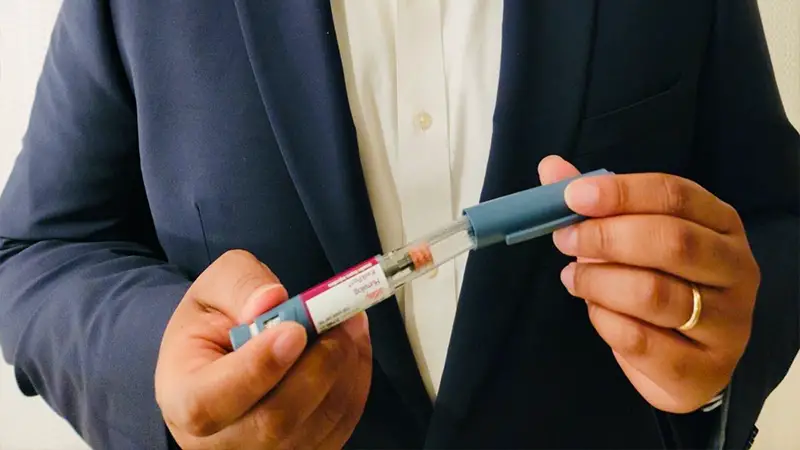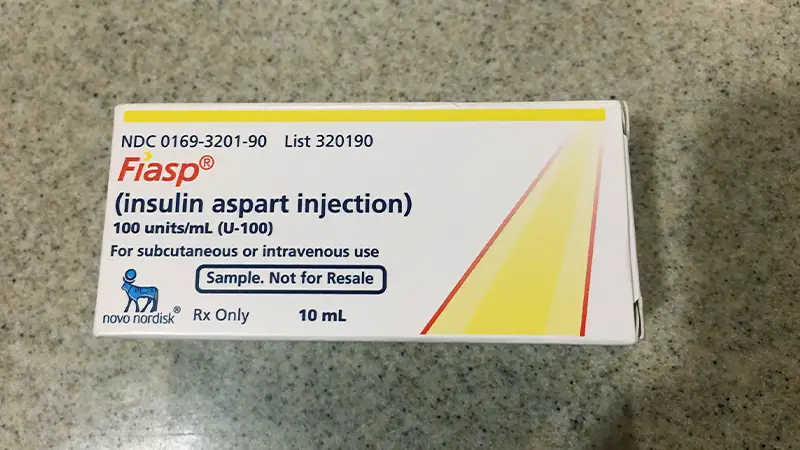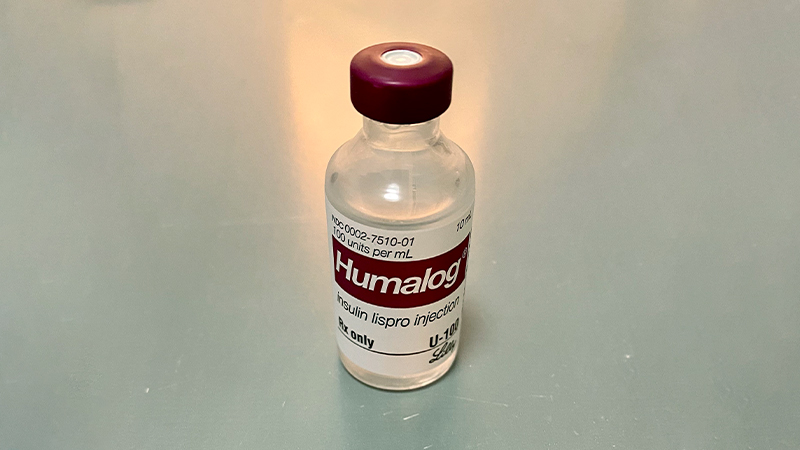Managing diabetes is a delicate balancing act, and choosing the right insulin can make all the difference.
In this comprehensive guide, we delve into the world of rapid-acting insulins, focusing on two prominent players: Fiasp and Humalog.
These insulins are pivotal for individuals requiring precise control over their blood sugar levels, particularly during and after meals.
The debate over which insulin to use—Fiasp or Humalog—often boils down to the nuances of their efficacy, onset, and individual preferences. These differences are vital for informed decision-making in diabetes management.
As we explore Fiasp’s lightning-fast action and Humalog’s proven track record, we’ll equip you with the knowledge to discuss options with your healthcare provider and make an informed choice tailored to your unique needs.
Whether you’re new to insulin therapy or considering a switch, this guide will empower you with the insights you need for better blood sugar control and improved overall well-being. Stay focused.
What Is Rapid-Acting Insulin?

A Rapid-acting insulin is a type of insulin analog designed to mimic the natural insulin response of the human body after meals.
Unlike regular or long-acting insulin, which has a slower onset and duration of action, rapid-acting insulin acts quickly to help control blood sugar levels during and immediately after eating.
This type of insulin is typically administered via subcutaneous injection or an insulin pump. Its rapid onset of action, usually within 15 minutes of injection, makes it an effective tool for managing post-meal blood glucose spikes.
This quick action aligns with the body’s natural insulin release, helping to prevent dangerous hyperglycemic episodes. Common examples of rapid-acting insulin include Humalog, NovoLog, and Apidra.
These insulins are especially beneficial for individuals with type 1 diabetes and some people with type 2 diabetes who require insulin therapy.
Rapid-acting insulin allows for more precise control over blood sugar levels, enabling individuals to better manage their diabetes and lead healthier lives.
However, it’s crucial to use rapid-acting insulin under the guidance of a healthcare professional to determine the right dosage and timing for each individual’s needs.
What Is Fiasp?

Fiasp is a brand of insulin aspart, which is a rapid-acting insulin analog used to manage diabetes.
The name “Fiasp” is derived from “faster insulin aspart.” What sets Fiasp apart from traditional rapid-acting insulins like Humalog or NovoLog is its faster onset of action.
Fiasp is designed to start working in the body more quickly, typically within 15 minutes of injection. This rapid action closely mimics the natural insulin release that occurs in response to meals.
This feature can help people with diabetes better control their blood sugar levels during and after eating, reducing the risk of post-meal spikes.
Fiasp is administered through subcutaneous injection and is often used in conjunction with other types of insulin or insulin delivery methods as part of a comprehensive diabetes management plan.
It should be used under the guidance and prescription of a healthcare professional who can determine the appropriate dosage and administration instructions based on an individual’s specific needs and circumstances.
What Is Humalog?

Humalog is a brand of insulin lispro, a type of rapid-acting insulin analog used in the treatment of diabetes.
It is designed to help regulate blood sugar levels in people with diabetes, particularly those who require insulin therapy to manage their condition. The distinguishing feature of Humalog is its rapid onset of action.
When injected subcutaneously, Humalog starts working within approximately 15 minutes, making it particularly effective at controlling blood sugar spikes that occur after meals.
This quick action closely resembles the natural insulin response of a healthy pancreas. Humalog is commonly prescribed for individuals with type 1 diabetes and some people with type 2 diabetes who need insulin supplementation.
It can be used in various insulin delivery systems, including insulin pens and insulin pumps, to provide flexibility and precise control over blood glucose levels.
The specific dosage and usage of Humalog should be determined by a healthcare professional based on an individual’s diabetes management plan and blood sugar monitoring.
It is important to use Humalog as directed to effectively manage diabetes while minimizing the risk of hypo- or hyperglycemia.
Similarities between Fiasp and Humalog
Fiasp and Humalog are both rapid-acting insulin analogs used in the treatment of diabetes. While they have some differences, they also share several similarities:
Rapid Onset of Action
Both Fiasp and Humalog have a rapid onset of action, typically starting to work within approximately 15 minutes after injection. This quick action helps control post-meal blood sugar spikes.
Mealtime Use
Both insulins are primarily used to manage blood sugar levels in response to meals. They are taken just before or immediately after eating to mimic the natural insulin response to food.
Subcutaneous Injection
Fiasp and Humalog are administered via subcutaneous injection, which is a common and convenient method for insulin delivery.
Flexible Timing
Both insulins offer flexibility in terms of dosing timing. They can be adjusted to match the timing of meals, allowing for more personalized diabetes management.
Compatibility with Insulin Pumps
Both Fiasp and Humalog can be used in insulin pumps, offering continuous insulin delivery for individuals who use these devices.
Prescription-Based
Both require a prescription from a healthcare professional, who will determine the appropriate dosage and usage instructions based on an individual’s diabetes management plan.
Potential for Hypoglycemia
Like all insulins, both Fiasp and Humalog carry the risk of causing hypoglycemia (low blood sugar) if not used correctly or if the dosage is too high.
Careful monitoring and adherence to prescribed dosing are essential to minimize this risk.
While Fiasp and Humalog share these common characteristics, it’s important to note that they may have subtle differences in terms of onset, duration, and individual response.
Fiasp vs. Humalog: The Differences
Fiasp and Humalog are both rapid-acting insulin analogs used to manage diabetes, but they have some differences in terms of their properties and how they work:
Onset of Action
- Fiasp: Fiasp has an even faster onset of action compared to Humalog, typically starting to work within 5-15 minutes after injection. This extremely rapid action helps control blood sugar spikes right after meals.
- Humalog: Humalog also has a rapid onset of action, but it generally starts working within about 15 minutes of injection.
Duration of Action
- Fiasp: Fiasp has a relatively short duration of action, typically lasting up to 3-5 hours. This shorter duration may require additional injections for some individuals.
- Humalog: Humalog has a similar duration of action, typically lasting around 3-5 hours as well.
Formulation
- Fiasp: Fiasp contains niacinamide (vitamin B3) and a proprietary formulation that enhances its absorption and speed of action.
- Humalog: Humalog is a straightforward insulin lispro analog without additional additives.
Usage Timing
- Fiasp: Fiasp is specifically designed for mealtime use, offering rapid control over post-meal blood sugar spikes.
- Humalog: Humalog is also used at mealtimes to manage post-meal glucose levels effectively.
Insulin Pumps
Both Fiasp and Humalog are compatible with insulin pumps, making them suitable for individuals who use these devices for continuous insulin delivery.
Individual Response
The effectiveness of Fiasp and Humalog may vary from person to person. Some individuals may find that one insulin works better for them in terms of blood sugar control and fewer hypoglycemic episodes.
Cost and Availability
The cost and availability of Fiasp and Humalog may vary depending on location, insurance coverage, and healthcare provider preferences.
The choice between Fiasp and Humalog should be made in consultation with a healthcare professional.
Efficacy and Effectiveness of Fiasp and Humalog
The efficacy and effectiveness of Fiasp and Humalog, both rapid-acting insulin analogs, can vary from person to person based on individual factors, including lifestyle, insulin sensitivity, and meal patterns.
Here’s a general overview of their efficacy and effectiveness:
Fiasp (Faster Insulin Aspart)
Efficacy
- Fiasp is designed to have an extremely rapid onset of action, often starting to work within 5-15 minutes after injection.
- Its fast-acting nature makes it particularly effective at controlling post-meal blood sugar spikes.
Effectiveness
- Fiasp is generally effective in managing blood sugar levels when taken as directed, especially in the context of mealtime insulin.
- Its ability to mimic the natural insulin response can lead to improved post-meal glucose control.
Individual Variability
As with any insulin, individual responses can vary. Some people may find Fiasp more effective in their specific diabetes management plan, while others may not experience significant differences compared to other rapid-acting insulins.
Humalog (Insulin Lispro)
Efficacy
Humalog is also a rapid-acting insulin analog with a rapid onset of action, typically starting to work within about 15 minutes after injection.
Effectiveness
- Humalog has a well-established track record of effectiveness in managing blood sugar levels, particularly when used as a mealtime insulin.
- Many individuals with diabetes have successfully incorporated Humalog into their diabetes management plans to control post-meal glucose levels.
Individual Variability
Similar to Fiasp, individual responses to Humalog can vary. Some people may prefer Humalog for its familiarity and effectiveness, while others may explore alternatives like Fiasp for potentially faster action.
The choice between Fiasp and Humalog, in terms of efficacy and effectiveness, should be guided by a healthcare professional’s recommendations and an individual’s specific needs.
Factors such as insulin sensitivity, lifestyle, meal patterns, and personal preferences play a significant role in determining which insulin is most suitable for achieving optimal blood sugar control and overall well-being.
FAQs
What is the main difference between Fiasp and Humalog?
Fiasp has a faster onset of action, usually within 5-15 minutes, while Humalog starts working in about 15 minutes. Fiasp’s rapid action is designed to control post-meal blood sugar spikes more effectively.
Can I use Fiasp or Humalog in an insulin pump?
Yes, both Fiasp and Humalog are compatible with insulin pumps. They can be used for continuous insulin delivery, offering flexibility in insulin management.
Are there any side effects specific to Fiasp or Humalog?
Common side effects for both include hypoglycemia (low blood sugar) and injection site reactions. Fiasp may have a slightly higher risk of injection site reactions due to its unique formulation.
Is one insulin better than the other for managing post-meal glucose levels?
Both Fiasp and Humalog are effective at managing post-meal glucose levels. The choice depends on individual preferences, insulin sensitivity, and consultation with a healthcare provider.
Are there cost differences between Fiasp and Humalog?
Cost varies by location and insurance coverage. Generally, Fiasp may be more expensive than Humalog, but specific costs depend on factors such as your insurance plan and pharmacy pricing.
Discuss options with your healthcare provider and insurance company for cost-effective choices.
Wrapping Up
In the realm of diabetes management, knowledge is the key to empowerment. The comparison between Fiasp and Humalog highlights the importance of individualized care.
While these rapid-acting insulins share similarities, subtle differences can impact your daily life.
Remember, the choice between Fiasp and Humalog isn’t a one-size-fits-all decision. Consult your healthcare provider, and consider your lifestyle, insulin sensitivity, and preferences.
The goal remains the same: effectively control blood sugar levels to lead a healthy, fulfilling life.
As research and innovation in diabetes treatment continue, more options may emerge. Staying informed and engaged with your healthcare team ensures you can adapt and optimize your diabetes management strategy.
Whichever insulin you choose, know that you have the tools and support to thrive in your journey towards better health. Thank you so much.
Hi, I’m Mark Pattinson and I’m a freelance personal trainer. I’ve been working in the fitness industry for over 10 years especially since I work with diabetes patients and I love helping people achieve their fitness goals. I believe that everyone can benefit from a good workout, and I’ll do everything to make sure you get the most out of your training.